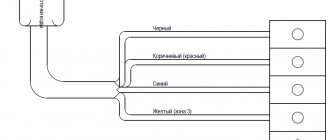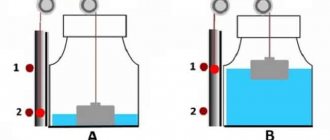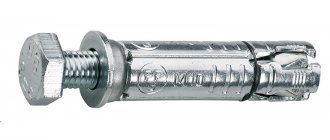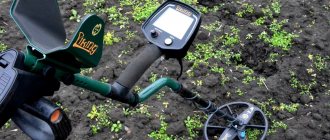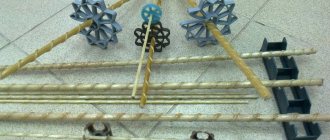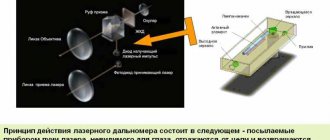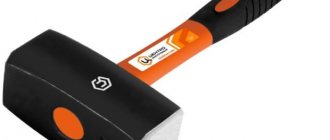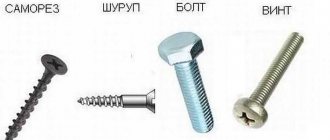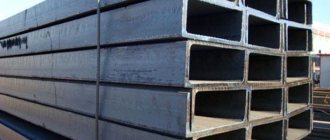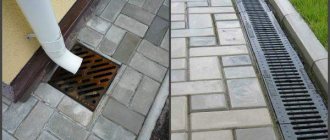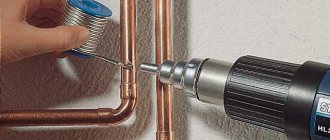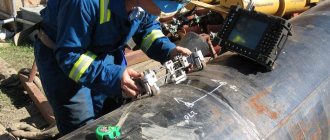Liquid level sensors in the tank allow you to both perform a current measurement of the amount of liquid filled and report when its limit values have been reached. Such devices consist of a sensitive sensor that responds to certain physical parameters, and a measurement, control and indication circuit. Depending on the area of application, devices are used that differ in their operating principles.
The information presented in the article will help you learn about the operating principles of different types of sensors and their areas of application. A brief overview of their advantages and disadvantages will be carried out, and the main manufacturers that have proven themselves on the market will be indicated.
Classification of devices
Liquid level sensors in a tank can be level meters or alarms. The first of them are designed to continuously measure the liquid level at the current time. They use sensors that operate on different physical principles. Further processing of the signals coming from them is carried out by analog or digital electronic circuits that are part of the level gauges. The obtained indicators are displayed on the display elements.
Alarms warn when a certain value of the liquid level in the container, preset by the setting elements, has been reached. Another name for them is water level sensors in the tank to shut off its further supply. Their output signal is discrete. The warning may be provided in the form of a light or sound alarm. In this case, the operation of the filling or draining systems is automatically blocked.
Types of level sensors
Depending on the principle of operation, alarms are usually divided into the following types:
- float type;
- using ultrasonic waves;
- devices with a capacitive level detection principle;
- electrode;
- radar type;
- working on the hydrostatic principle.
Since these types are the most common, let's look at each of them separately.
Float
This is the simplest, but nevertheless effective and reliable way to measure liquid in a tank or other container. An example implementation can be found in Figure 2.
Rice. 2. Float sensor for pump control
The design consists of a float with a magnet and two reed switches installed at control points. Let us briefly describe the principle of operation:
- The container is emptied to a critical minimum (A in Fig. 2), while the float drops to the level where reed switch 2 is located, it turns on the relay that supplies power to the pump pumping water from the well.
- The water reaches the maximum level, the float rises to the location of reed switch 1, it is triggered and the relay is turned off, accordingly, the pump motor stops working.
It’s quite easy to make such a reed switch yourself, and setting it up comes down to setting on-off levels.
Note that if you choose the right material for the float, the water level sensor will work even if there is a layer of foam in the tank.
Ultrasonic
This type of meter can be used for both liquid and dry media and may have an analogue or discrete output. That is, the sensor can limit the filling upon reaching a certain point or monitor it continuously. The device includes an ultrasonic emitter, receiver and signal processing controller. The operating principle of the alarm is demonstrated in Figure 3.
Rice. 3. Operating principle of ultrasonic level sensor
The system works as follows:
- an ultrasonic pulse is emitted;
- the reflected signal is received;
- The duration of signal attenuation is analyzed. If the tank is full, it will be short (A Fig. 3), and as it becomes empty it will begin to increase (B Fig. 3).
The ultrasonic alarm is non-contact and wireless, so it can be used even in aggressive and explosive environments. After initial setup, such a sensor does not require any specialized maintenance, and the absence of moving parts significantly extends its service life.
Electrode
Electrode (conductometric) alarms allow you to monitor one or more levels of an electrically conductive medium (that is, they are not suitable for measuring the filling of a tank with distilled water). An example of using the device is shown in Figure 4.
Figure 4. Liquid level measurement with conductometric sensors
In the example given, a three-level alarm is used, in which two electrodes control the filling of the container, and the third is an emergency one to turn on the intensive pumping mode.
Capacitive
Using these alarms, it is possible to determine the maximum filling of the container, and both liquid and bulk solids of mixed composition can act as the process medium (see Fig. 5).
Rice. 5. Capacitive level sensor
The operating principle of the alarm is the same as that of a capacitor: the capacitance is measured between the plates of the sensitive element. When it reaches the threshold value, a signal is sent to the controller. In some cases, a “dry contact” design is used, that is, the level gauge operates through the tank wall in isolation from the process medium.
These devices can operate over a wide temperature range, are not affected by electromagnetic fields, and can operate over a long distance. Such characteristics significantly expand the scope of application up to severe operating conditions.
Radar
This type of alarm device can truly be called universal, since it can work with any process environment, including aggressive and explosive ones, and pressure and temperature will not affect the readings. An example of how the device works is shown in the figure below.
Level measurement with radar sensor
The device emits radio waves in a narrow range (several gigahertz), the receiver catches the reflected signal and, based on its delay time, determines how full the container is. The measuring sensor is not affected by pressure, temperature or the nature of the process fluid. Dustiness also does not affect the readings, which cannot be said about laser alarms. It is also necessary to note the high accuracy of devices of this type; their error is no more than one millimeter.
Hydrostatic
These alarms can measure both maximum and current filling of tanks. Their operating principle is demonstrated in Figure 7.
Figure 7. Fill measurement with gyrostatic sensor
The device is built on the principle of measuring the level of pressure produced by a column of liquid. Acceptable accuracy and low cost have made this type quite popular.
Within the scope of the article, we cannot examine all types of alarms, for example, rotary-flag ones, for identifying granular substances (a signal is sent when the fan blade gets stuck in a granular medium, after first tearing out the pit). It also makes no sense to consider the principle of operation of radioisotope meters, much less recommend them for checking the level of drinking water.
Level measurement methods
Depending on the properties of the liquid whose level in the tank needs to be determined, the following measurement methods are used:
- contact, in which there is direct interaction of the liquid level sensor in the tank or its part with the measured medium;
- non-contact, allowing to avoid direct interaction of the sensor with the liquid (due to its aggressive properties or high viscosity).
Contact devices are located in a container directly on the surface of the liquid being measured (floats), in its depth (hydrostatic pressure gauges), or on the tank wall at a certain height (plate capacitors). For non-contact meters (radar, ultrasonic), it is necessary to provide a zone of direct visibility of the surface of the liquid being measured and the absence of direct contact with it.
Vibrating non-invasive level switch
The sensor technology is based on a method for monitoring the local mechanical properties of a liquid reservoir. The sensor acts on the wall of the tank and causes it to vibrate. The accelerometer is part of the sensor and measures vibrations caused by force and transmits a signal to the sensor processor. The processor algorithm calculates the vibration value each time the sensor takes a measurement.
The sensor is installed on the outside of metal or plastic liquid containers. There is no longer any need to install inside the tank or drill holes. The sensor has built-in Bluetooth connectivity for Android and iOS phones. In addition, the sensor has two outputs for integration, for example, into industrial networks, control relays, signaling equipment or buzzers.
No control unit required. Suitable for all types of liquids such as fresh water, fuel, oil, sewage and waste water.
Capacitive non-contact liquid level sensors KQ10 series
The KQ10 series capacitive non-invasive non-contact sensor is a device for continuously determining the level of liquids and oils through the wall of a non-conductive vessel. The device is installed outside the tank using double-sided adhesive tape without interfering with the tank structure.
To reliably detect the liquid level in a conductive vessel, the sensor can be mounted on a non-conductive bypass pipe with a diameter of 10 mm or more.
The sensor has 3 point level indicators built into it, which allow you to monitor 3 states: empty, full and overflowing tank, which reduces the number of installed sensors and simplifies installation.
Clamp-on non-invasive capacitive level sensors
The GPLS-25 clip-on capacitive sensor for level monitoring through the wall is simply and quickly put into operation by installing it using double-sided tape or special clamps. And also thanks to the convenient setting of the sensor, in which you can set the operating mode (closing/opening) and sensitivity.
The clip-on sensor is ideal for indicating liquid level in glass or plastic tube level indicators or cylindrical containers.
| GPLS-25N-0 – Liquid level sensor for tubular level indicators with a round surface. The sensor is attached to glass or plastic level gauges (indicators) and tubes using two straps (2 straps for mounting, included in the delivery package). | |
| GPLS-25N-1 – Level sensor through the wall of plastic and glass tanks for mounting on flat surfaces. The sensor is installed on a clean, flat surface of the tank. The device is secured using double-sided tape (included in delivery). |
Sensor for monitoring the level of liquids in non-conductive tanks
Level sensor FLEXI FLD-32 NEW MEDUSA is a non-invasive, non-contact device for signaling the level of liquid (conductive and non-conductive) in a glass or plastic tank.
The device has a flexible body made of polyurethane material, which allows it to be installed on curved surfaces (plastic containers, canisters, plastic bathtubs, swimming pools, etc.)
Thanks to its design, the NEW MEDUSA level sensor can be used with containers without the use of additional holes, by installing the device externally using a self-adhesive layer and a special fastening tape.
Optical non-invasive liquid level sensor
Miniature photoelectric liquid level switches BL13-TDT are designed for installation on transparent tubes with a diameter of 6 to 13 mm with a wall thickness of no more than 1 mm. Tube material is FEP or similar transparency. The BL13-TDT sensor signals the presence or absence of liquid in the tube on which it is installed.
Contact a specialist for the correct selection of a non-invasive level control sensor.
Operating principles
Both level gauges and alarms use different operating principles to perform their functions. The most common types of devices are:
- float sensors for liquid level in the tank;
- capacitive;
- hydrostatic liquid level sensors;
- radar type devices;
- ultrasonic sensors.
Float valves, in turn, can be mechanical, discrete and magnetostrictive. The first three groups of sensors include devices using the contact measurement method, the other two belong to non-contact devices.
Protection of a submersible well pump from “dry running”
The use of a water level sensor directly in a well has a number of features:
- The liquid level sensor must be absolutely sealed, both on the sensing element side and on the cable side;
- Have small dimensions, since the space between the casing and pressure pipe is limited;
- The presence of moving parts and connections is not allowed, as solid particles present in the well will get into them.
By protecting the well pump from dry running, which will prevent it from overheating and short-circuiting the electric pump motor winding, you save good money!
Reference:
The price of the ECV 10-65-125 pump is on average 100,000 rubles, which is more than 5 times more than the cost of a budget level sensor for a submersible well pump.
In addition, the use of a water level sensor for a well pump will allow you to organize control over the flow rate of the well, rational use of subsoil and access to information about the condition of the well from anywhere in the world where there is Internet. Learn more about this in a short video.
It is recommended to use submersible hydrostatic level meters with an analog output, used in conjunction with secondary devices*, as a level switch to protect a well pump.
We recommend choosing:
| MPM489W | Budget series. Availability in stock. |
| NivoPress N | For critical applications. Option – temperature sensor. |
| LMK 306 | For cases where the space between the pressure pipe and the casing is limited, the sensor diameter is 17 mm. |
* - to select secondary devices, please contact our consulting engineers. The delivery set includes a diagram of connections between the sensor and the device and instructions for quick start-up.
Mechanical float sensors
A light float, constantly located on the surface of the liquid in the tank, is connected by a system of mechanical levers to the middle terminal of the potentiometer, which is the arm of the resistance bridge. With a minimum amount of liquid in the container, the bridge is considered balanced. There is no voltage in its measuring diagonal.
As the reservoir fills, the float monitors the position of the liquid level by moving the movable contact of the potentiometer through a system of levers. Changing the resistance of the potentiometer leads to an imbalance in the bridge. The voltage that appears in its measuring diagonal is used by the electronic circuit of the display system. Its analog or digital readings correspond to the amount of liquid in the tank at the current time.
Remote control float level sensors (alarms)
Float level sensors OWEN PDU are devices designed to signal the level of liquids. OWEN PDUs are used as part of systems for monitoring and regulating liquids (water, solutions, light petroleum products and other liquid media, including aggressive ones, with the exception of those corrosive to the sensor material) in various tanks. ARIES remote control units are used to measure both current and limit (maximum or minimum) liquid levels. Float level sensors have general industrial and explosion-proof versions.
OWEN float level sensors are resistant to foam and bubbles and can handle viscous liquids.
To control the level of non-viscous liquids, level sensors with a cylindrical float PDU-1, PDU-2 are produced, for monitoring the level of viscous liquids - with a spherical float PDU-3. According to the installation method, sensors with horizontal and vertical installation are distinguished.
The OWEN company produces single-level, two-level and three-level float sensors; it is also possible to manufacture OWEN PDU sensors with explosion protection of the “intrinsically safe circuit” type 0ExiaIICT4Х. To get acquainted with sensors in the explosion-proof version PDU-Ex, follow the link.
To connect to the automated process control system, OVEN remote control sensors can be equipped with an AWG24 silicone cable of any length or an HB 0.35 wire.
Modifications of single-level sensors
| Model | Installation type | Float type | Rod length L, standard version | Maximum rod length L (on request) |
| PDU-1.1 | Horizontal | Cylindrical | 76 mm | 2,500 mm |
| PDU-2.1 | Vertical | Cylindrical | 40 mm | 2,500 mm |
| PDU-3.1 | Vertical | Spherical | 85 mm | 3,000 mm |
When ordering a modification with an extended rod, the length multiplicity is 50 mm.
Modifications of two-level sensors
| Model | Installation type | Float type | Rod length L, maximum (on request) |
| PDU-1.2 | Horizontal | Cylindrical | 2,500 mm |
| PDU-2.2 | Vertical | Cylindrical | 2,500 mm |
| PDU-3.2 | Vertical | Spherical | 3,000 mm |
Two-level sensors are produced to order. When ordering, the multiple of rod length is 50 mm.
Modifications of three-level sensors
| Model | Installation type | Float type | Rod length L, maximum (on request) |
| PDU-3.3 | Vertical | Spherical | 3,000 mm |
Three-level sensors are produced to order. When ordering, the multiple of rod length is 50 mm.
Features of the design and installation of OVEN PDU level sensors
The level sensor has a float that moves along a vertical rod. There is a permanent magnet inside the float, and a reed switch is located in the rod, which is a hollow tube. The reed contact is activated when a magnet approaches. If installing the sensor on top of the container is not possible, then the float level sensor can be mounted in the wall of the container or in the bottom (Fig. 1).
Rice. 1. Options for mounting the level sensor: horizontal (PDU-1.1) and vertical (PDU-2.1, PDU-3.1)
OWEN RC sensors are produced with normally open and normally closed contacts. Options for the OVEN remote control contacts are shown in Fig. 2.
a) Remote control with normally open contact
b) Remote control with normally closed contact
Rice. 2. An increase in the liquid level in the tank causes the float to move upward and the contact of the level sensor to close/open.
Application of level sensors ARIES PDU
OWEN RC sensors can operate at temperatures up to +105 °C in chemically aggressive environments. Sensor material – stainless steel (12X18H10T).
ARIES PDUs are used to control the level of wastewater, chemically aggressive liquids or food products, including viscous liquids. Float sensors can be used to control liquid levels in vehicles, for example, to control the volume of fuel in heavy equipment: trucks, excavators, diesel locomotives. Here, level sensors operate under conditions of strong vibration and disturbance on the surface of the liquid. To eliminate the influence of these factors, the float sensor is placed in a special damper pipe with a diameter slightly larger than the diameter of the float.
It should be remembered that float-type level sensors are not suitable for measuring sticky and drying liquids, liquids with mechanical inclusions, or when the liquid freezes.
Discrete float sensors
A discrete signal in the form of closing or opening the reed relay contacts is used by the electronic indication and signaling circuit to notify that the liquid level in the container has reached a certain value. Metal contacts, made of a material with low contact resistance when they are closed, are placed in a hollow, insulated glass bulb.
A water level sensor in a tank with a discrete output includes a guide in the form of a hollow tube into which liquid from the tank does not enter. The contacts of one or more reed relays are fixed inside the guide. Their location depends on the case in which it is necessary to receive an alarm when the liquid level reaches a given value.
The sensor float with a small permanent magnet built into it moves along the guide when the liquid level in the container changes. The contact group is triggered when it enters the magnetic field of the permanent magnet of the float. The signal through the wires connected to the contacts of the water level sensor in the reed switch tank is sent to the alarm circuit.
Ultrasonic non-contact liquid level sensors
Ultrasonic liquid and water sensors are also installed in the container lid. With ultrasound, non-invasive measurement is not possible because sound waves do not travel through materials.
Ultrasonic level sensors are divided into ultrasonic level switches, i.e. sensors that monitor discrete changes (yes/no), and ultrasonic level meters (level transducers), which generate an electrical or digital signal proportional to changes in the liquid level.
Ultrasound is capricious, and the quality of measurements strongly depends on air humidity, ambient temperature, vapor formation, and the presence of gas cushions in the tank. Foaming and bubbling make level measurement impossible.
Magnetostrictive float sensors
Sensors of this type produce a constant signal depending on the level of liquid in the tank. The main element, as in the previous case, is a float with a permanent magnet inside, which takes its position on the surface of the liquid and moves in a vertical plane along the guide.
The inner cavity of the guide, isolated from the liquid, is occupied by a waveguide. It is made of magnetostrictive material. At the bottom of the element there is a source of current pulses that propagate along it.
When the emitted pulse reaches the location of the float with the magnet, the interaction of two magnetic fields occurs. The result of this interaction is the occurrence of mechanical vibrations that propagate back along the waveguide.
A piezoelectric element is attached next to the pulse generator, which records mechanical vibrations. An external electronic circuit analyzes the time delay between the emitted and received pulses and calculates the distance to the float, which is constantly located on the surface of the liquid. The display circuit constantly reports the liquid level in the tank.
Making a water level sensor in a tank with your own hands
Let's say there is a task to automate the operation of a submersible pump for water supply to a dacha. As a rule, water flows into a storage tank, therefore, we need to make sure that the pump automatically turns off when it is filled. It is not at all necessary to buy a laser or radar level indicator for this purpose; in fact, you don’t need to purchase any. A simple problem requires a simple solution, it is shown in Figure 8.
Water pump control circuit
To solve the problem, you will need a magnetic starter with a 220-volt coil and two reed switches: a minimum level for closing, a maximum level for opening. The pump connection diagram is simple and, importantly, safe. The principle of operation was described above, but let’s repeat it:
- As the water collects, the float with the magnet gradually rises until it reaches the maximum level reed switch.
- The magnetic field opens the reed switch, turning off the starter coil, which leads to de-energization of the engine.
- As the water flows, the float drops until it reaches the minimum mark opposite the lower reed switch, its contacts close, and voltage is supplied to the starter coil, which supplies voltage to the pump. Such a water level sensor in a tank can work for decades, unlike an electronic control system.
A wide selection of liquid level sensors is offered - not only by the Russian manufacturer, but also by the exclusive representative of world-famous brands of instrumentation and equipment, the main of which is the American company Dwyer Instruments.
In the representative catalog of liquid level sensors, located at the link dwyer.ru/catalog/datchiki-urovnya, you can easily find a sensor of any type and level of complexity in stock or on order. These are hydrostatic, capacitive, float, vibration, reed switch and ultrasonic sensors, as well as directional wave radar. The company's offices are located in Moscow, St. Petersburg, Yekaterinburg, Kazan, Riga, Almaty. Contact numbers can be found on the website https://dwyer.ru. Makarov Dmitry
Capacitive sensors
The operation of sensors of this type is based on the properties of a capacitor to change its electrical capacitance when the dielectric constant of the material filling the space between its plates changes. Coaxial type capacitors are used, which are a pair of coaxial hollow metal cylinders of different diameters.
The latter are the plates of the capacitor, between which liquid can freely penetrate. The dielectric constants of air and liquid media have different values. Filling the reservoir leads to a change in the value of the total dielectric constant of the coaxial capacitor and, accordingly, its electrical capacitance.
The frequency of the oscillatory circuit, in the circuit of which the capacitor is connected, changes in proportion to the change in its capacitance. An electronic frequency/voltage converter monitors this change and displays a value proportional to the degree of filling of the tank.
Hydrostatic sensors
Another name for such a device is a detector, or pressure transducer. They can be stationary, fixed at the bottom of the container filled with liquid, or portable. In the latter case, the pressure transducers are equipped with a cable of considerable length. This allows them to be used for tanks of different geometric sizes.
The sensing element of a hydrostatic sensor is a membrane that senses the pressure of a liquid column above it. It is configured in such a way that atmospheric pressure does not lead to deformation of the membrane. Based on the pressure at the measurement point, you can determine the height of the liquid column or the degree of filling of the tank.
The amount of membrane deformation is converted into a proportional electrical indicator, which is then used to display the level of liquid in the reservoir. Corrections are applied that take into account the density of the measured medium and the acceleration of gravity at the measurement point.
Radar type sensors
The container liquid level sensor uses a non-contact measurement method based on the properties of this medium of any density and viscosity to reflect an electrical signal. The frequency of the emitted signal from a radar located above the surface of the measured liquid level changes according to a linear law.
Reflected from the surface, it arrives at the receiving device with a delay determined by the length of the path traveled. Thus, there is a difference between the frequencies of the two signals. Based on the frequency shift, the radar analyzing device determines the path traveled by the signal or the level of the reflecting liquid relative to the location of the radar.
Ultrasonic level sensors
The measurement scheme used for sensors of this type corresponds to that discussed in the previous section of the article. The location measurement method is used in the ultrasonic wavelength range.
The received data determines the time difference between the signals emitted by the transmitter and the signals received by the receiver. Using data on the speed of propagation of ultrasound in the space above the surface of the liquid, the analyzing device determines the distance traveled by the signal or the level of liquid in the reservoir.
